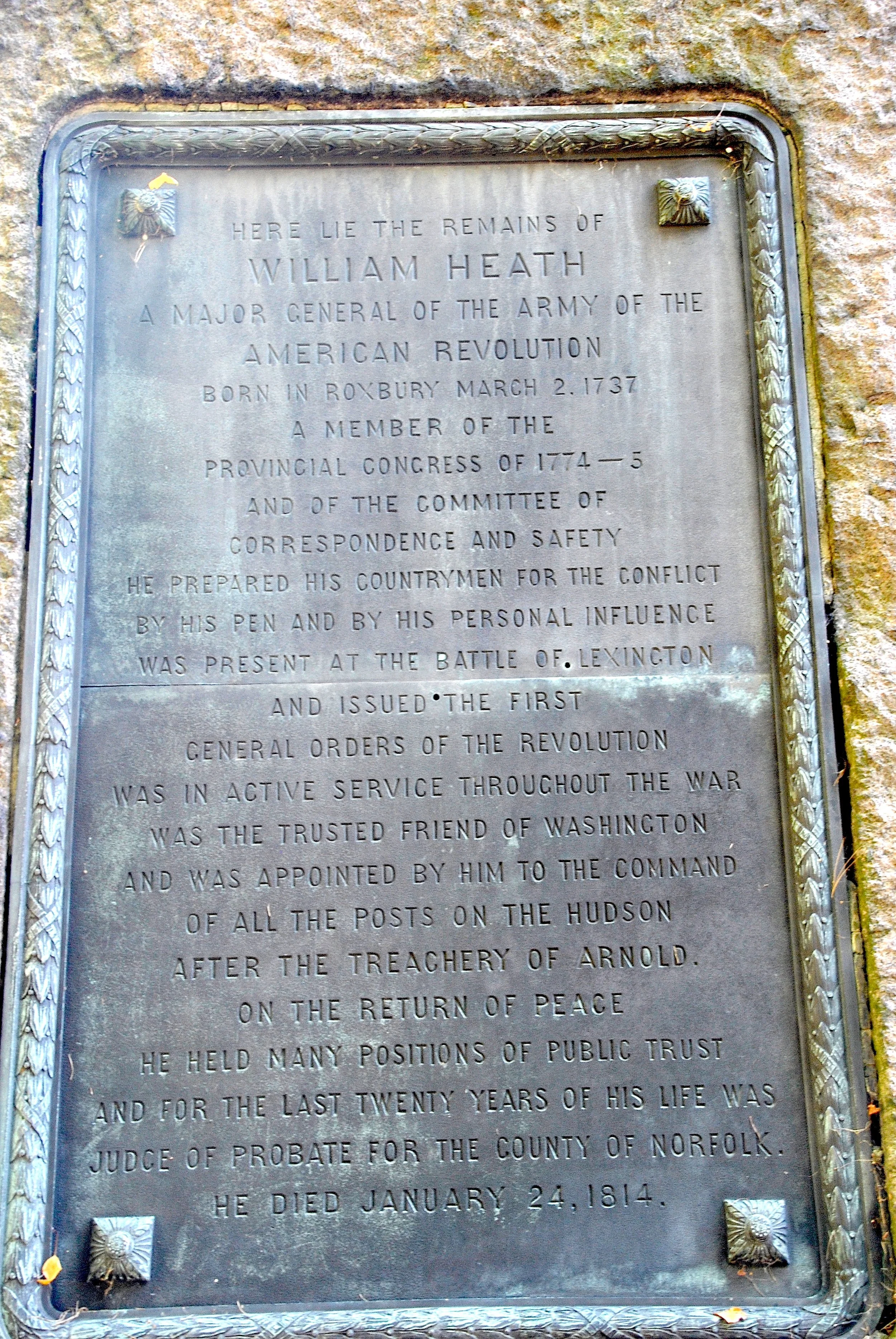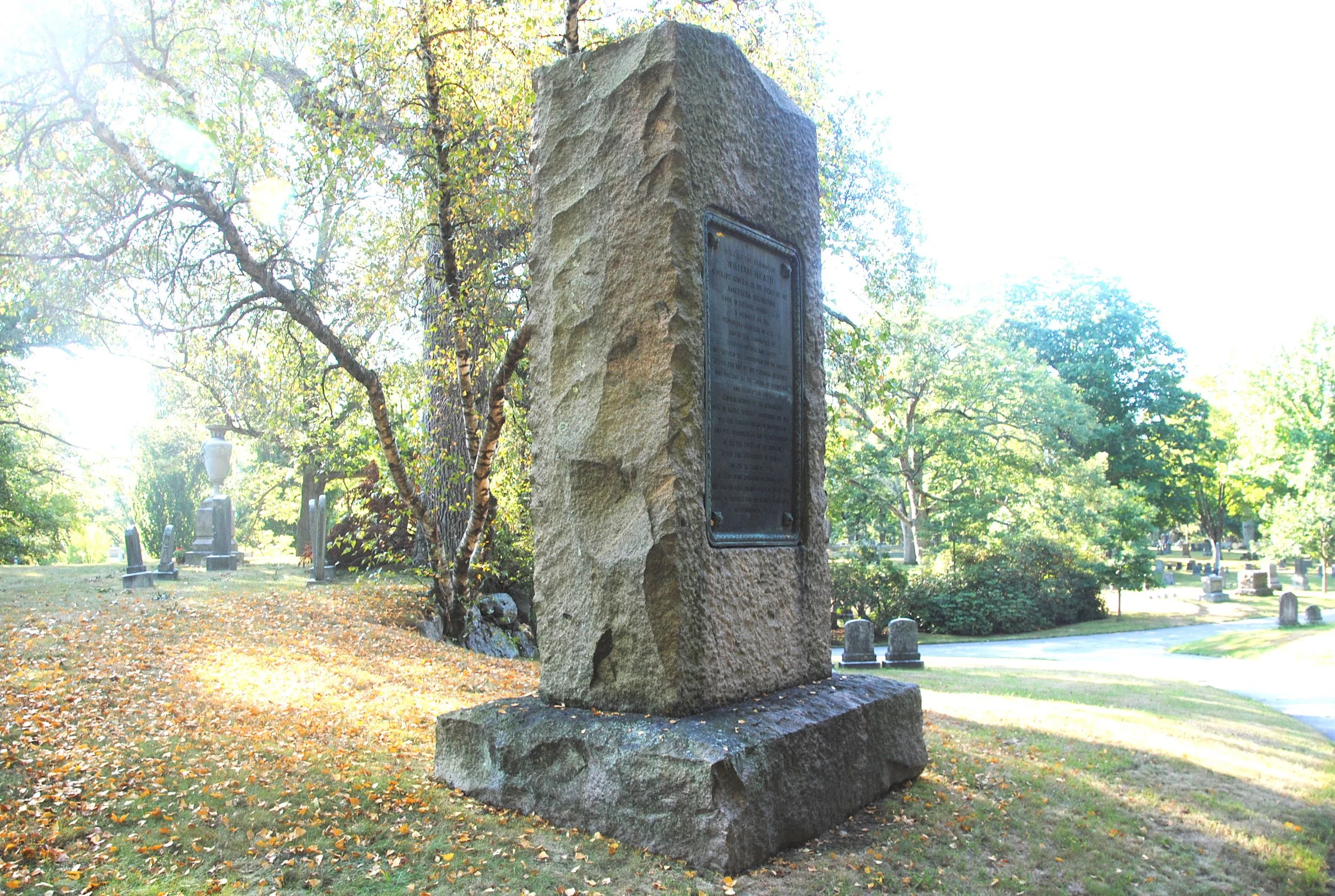Brigadier General William Heath
Brigadier General William Heath. Lithograph by John Norman. 1784 Courtesy of the Library of Congress
Jamaica Plain has its own Revolutionary patriot although Brigadier General William Heath might not be considered a hero. Rather, it could be said that General Heath was a defensive soldier; his career was spent in defense, notably the strategic Hudson River Forts his troops defended when was at command at West Point.
Heath is an ancient Roxbury name; General Heath was the fifth generation descended from William Heath. This first William Heath arrived in Roxbury in 1632 with, among others, Rev. John Eliot. William Heath was granted 50 acres at the foot of Great Hill (Mission Hill) in 1636. The farm in which General Heath was born on March 2, 1737 extended to both sides of Heath Street over to Day and Centre Streets.
The farm house was built where Heath and Bickford Streets meet. The lane to the farm off Centre Street became known over time as Heath Street. It connected Centre Street with Boylston Street (now Huntington Avenue).
Born a British subject, General Heath was a military man from the age of 17, when he joined the Roxbury Militia anticipating service in the French and Indian War. In 1765 he joined the Ancient and Honorable Artillery Company where he was made a Captain in 1770.
Heath was a favorite of Royal Governor Sir Francis Bernard – whose estate was near present-day Prince Street by the Jamaica Pond - despite Heath’s growing patriotic leanings.
Opposed to the 1765 Stamp Act, Heath and others also petitioned Governor Thomas Hutchinson to remove British soldiers from Roxbury; Hutchinson said he could not (“they are posted at His Majesties order”).
A Brigadier General in the Mass Militia in 1774, Heath fought at Lexington and Concord. However, he was overcautious and failed to trap the retreating, disorganized British soldiers from escaping across the Charlestown Neck (present day Bunker Hill and Main Streets). That overcaution would mark Heath’s military career.
George Washington next ordered Heath to Boston where he commended defensive troops at Dorchester Heights during the siege and troops at Roxbury’s High Fort to guard the land route to the capital. Heath was a division commander during the battles of Long Island and Harlem Heights. Again, he was overcautious: when ordered to take Fort Independence (Kingsbridge in the Bronx)and its 2000 strong Hessian garrison in January 1777 Heath who had 6000 troops was unsure what to do. He was also facing a blizzard and so withdrew.
Washington was furious (“you did not push vigorously to take Fort Independence”) and he censured Heath. Sending him back to command the continental forces in Boston from 1777 to 1780. Among his duties was to manage the prisoners of war captured at Saratoga. There were large numbers of POWs since when Gen. John Burgoyne surrendered on Oct 17, 1777 he went back to Britain, but the remains of his army stayed behind.
Bronze plaque outlining the achievements of General Heath on the Heath monument
After Benedict Arnold’s treachery of giving West Point over to the British in September 1780 was uncovered. Washington sent General Heath – who above all was a loyal patriot and a very good administrator - to guard the Hudson River Forts with 2500 troops. Heath made his headquarters at West Point.
Heath kept the British bottled up in Manhattan and prevented another invasion from Canada. He remained on guard until 1783 when the British army left North America. In the classic sword-to-ploughshare narrative Heath, now an American citizen, returned to his Jamaica Plain farm, dabbled in Massachusetts politics and became a probate judge.
He died in the farm house on January 4, 1814 and was buried in the family tomb near present day Bickford and Heath streets. The farm house was razed in 1843 and the farm was subdivided into house lots and breweries locations. So the family bought a lot at Forest Hills Cemetery on Eliot Hill on June 14, 1860. The General along with eight other family members were removed on Nov. 1, 1860 from their tomb to be interred at Forest Hills.
Monument to General William Heath. Nesutan Avenue. Forest Hills Cemetery.
In his 1878 history of Roxbury, Francis Drake wrote “the pilgrim will seek in vain for a monumental tablet of any kind commemorating this sterling patriot and an upright man.” This situation was rectified about 1880 when a tall slab of pink Dedham granite was erected on the edge of the lot with a bronze plaque listing the Generals achievements. No one else in the Heath lot has a marker.
written by Richard Heath, November 2025
Thanks to George Milley, CEO of Forest Hills Cemetery for the information on the Heath lot



